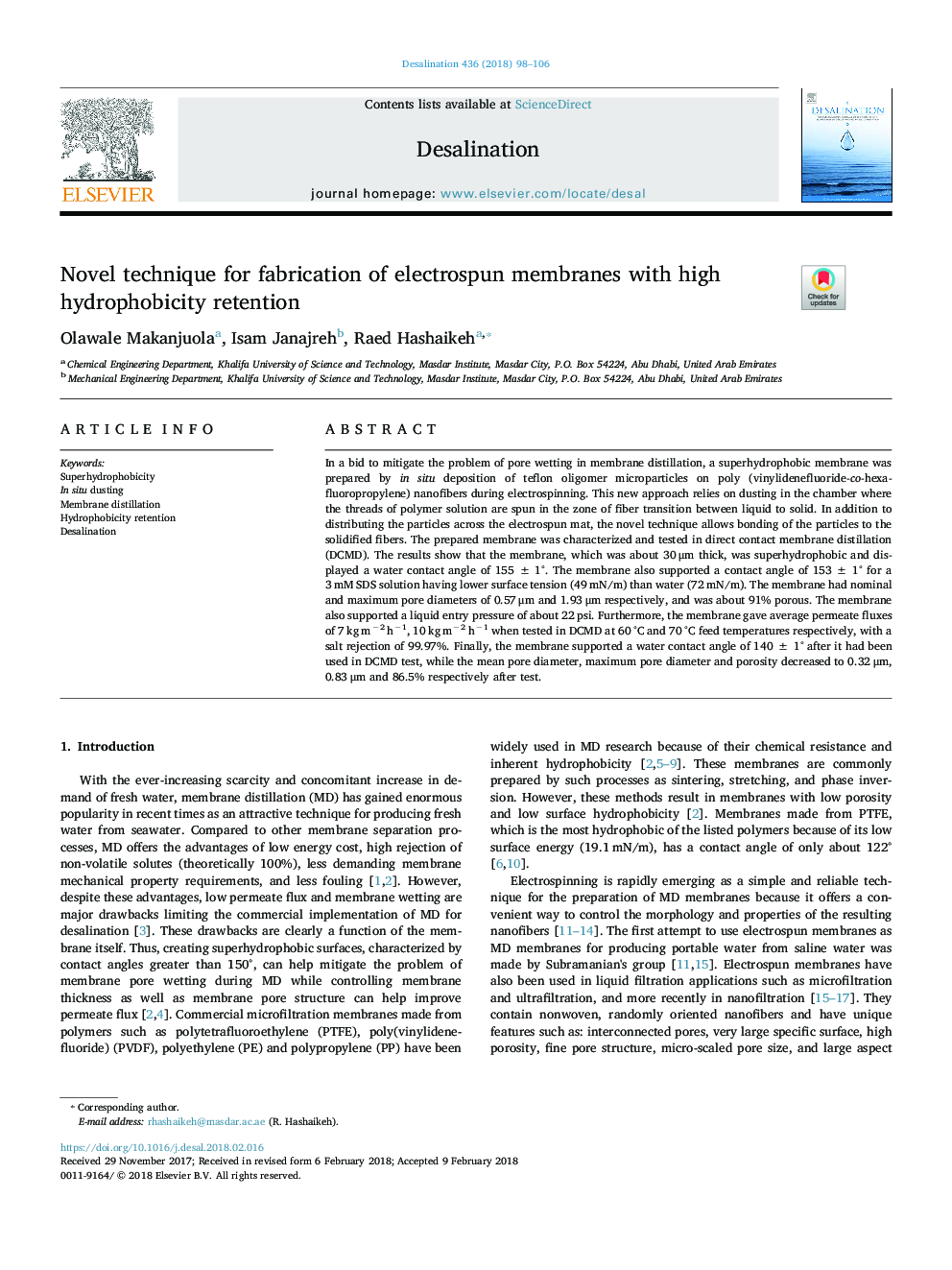| Article ID | Journal | Published Year | Pages | File Type |
|---|---|---|---|---|
| 7007896 | Desalination | 2018 | 9 Pages |
Abstract
In a bid to mitigate the problem of pore wetting in membrane distillation, a superhydrophobic membrane was prepared by in situ deposition of teflon oligomer microparticles on poly (vinylidenefluoride-co-hexafluoropropylene) nanofibers during electrospinning. This new approach relies on dusting in the chamber where the threads of polymer solution are spun in the zone of fiber transition between liquid to solid. In addition to distributing the particles across the electrospun mat, the novel technique allows bonding of the particles to the solidified fibers. The prepared membrane was characterized and tested in direct contact membrane distillation (DCMD). The results show that the membrane, which was about 30â¯Î¼m thick, was superhydrophobic and displayed a water contact angle of 155â¯Â±â¯1°. The membrane also supported a contact angle of 153â¯Â±â¯1° for a 3â¯mM SDS solution having lower surface tension (49â¯mN/m) than water (72â¯mN/m). The membrane had nominal and maximum pore diameters of 0.57â¯Î¼m and 1.93â¯Î¼m respectively, and was about 91% porous. The membrane also supported a liquid entry pressure of about 22â¯psi. Furthermore, the membrane gave average permeate fluxes of 7â¯kgâ¯mâ2â¯hâ1, 10â¯kgâ¯mâ2â¯hâ1 when tested in DCMD at 60â¯Â°C and 70â¯Â°C feed temperatures respectively, with a salt rejection of 99.97%. Finally, the membrane supported a water contact angle of 140â¯Â±â¯1° after it had been used in DCMD test, while the mean pore diameter, maximum pore diameter and porosity decreased to 0.32â¯Î¼m, 0.83â¯Î¼m and 86.5% respectively after test.
Related Topics
Physical Sciences and Engineering
Chemical Engineering
Filtration and Separation
Authors
Olawale Makanjuola, Isam Janajreh, Raed Hashaikeh,
